To calculate your poker equity - or how often you should win a hand, you can use a simple formula. Count how many outs you have. For example, if you're drawing to a flush, you have 13 suited cards, two in your hand, two on the board - leaves 9 outs. The chance of you hitting on the turn is 9.4 (+4) = 40%. Odds are calculated as soon as enough cards are in play. The position to receive the next card is highighted in red. Click on any card to highlight it. Online Poker Bonus Offers. Calculating Pot Odds Using the Percentage Method. Another way of calculating odds in poker is by using the percentage method. There are three simple steps in calculating the odds using the percentage method. Step 1: Calculate the Final Pot. This is the major difference between the ratio method and the percentage method. Common Poker Out Scenarios Step 1: Work Out How Much You'd Normally Win From Your Actual Poker Odds: 4:1 Odds you actually have of winning the. Step 2: Calculate How Much Money You Could Win and The Odds You're Getting: $90 Money in the pot + You must match this. Step 3: Decide Whether to Call. The Rule of Four and Two A much easier way of calculating poker odds is the 4 and 2 method, which states you multiply your outs by 4 when you have both the turn and river to come – and with one card to go (i.e. Turn to river) you would multiply your outs by 2 instead of 4.
Using mathematics and probability inpoker is one of the most useful (yet underused!) skills for earning profit over the long run.
We’ve put together a list of top poker tips used by the pros to help you play your best in every hand. Adding these invaluable skills to your arsenal will help to support the decision-making process.
For instance, adding certain calculations to your game will enable you to determine whether making a call, raise or fold in any given situation is the most profitable play in the long run (also referred to as +EV). While there are a few different calculations which can help you to elevate your game, one of the most fundamental is factoring in pot odds.
Take a look at the list of premier poker skills to master, below. We’ll explain exactly what pot odds are, how they work, and how to best incorporate them into your game.
What are poker pot odds?
Pot odds are the immediate odds you are being offered when you call a bet in poker. This is often called the “reward-to-risk” ratio and it calculates how much you stand to win immediately in relation to what you have to risk by calling a bet.
In the case of pot odds, the math is telling the player whether a call, raise or fold is a mathematically sound play, given the risk-to-reward ratio.
Take, for example, a hand in which you have contributed a huge proportion of your stack pre-flop and you are now heads-up. You have a made hand and are convinced that your opponent hasn’t connected. Now, if your opponent was to put in a bet on the river which was a mere fraction of the overall pot, you would call, right? Of course. This is because the “risk-to-reward” ratio is telling you that it makes sense to contribute just a few more chips for the chance to win the whole pot. Let’s dig a little deeper and find out exactly what this calculation looks like.
How to calculate pot odds?
Pot odds = [pot size]:[amount to call] where pot size includes any and all bets on the current street (pre-flop, flop, turn or river) as well as the amount in the middle. The final sum is expressed as a ratio.
Pot odds example
The pot is £400 and there is a £200 bet in front of you. You would follow the steps below to determine your pot odds:
Pot odds = [pot size]:[amount to call]
= [£400 + £200]:[£200]
= £600:£200 = 3:1
Pot odds = 3:1
What do pot odds really mean?
So what do 3:1 pot odds really mean? Well, in a nutshell, it means that you are required to put 25% more money into the pot if you decide to call. This is because the final pot size would be £800 and our call is £200 (800/200 is 25%).
We use pot odds to ensure we only call bets when we are getting good pot odds. While it’s best to use pot odds in conjunction with implied odds (we’ll cover this another day), equity and position, you can still use this calculation to see whether a call is preferable or not. As a rule of thumb, the bigger your pot odds, the better price you have for calling. In the above example, for example, it would be far more attractive to call a bet that gives you odds of 4/1 or 5/1.
Scenario
Let’s do a simple pot odds exercise to help you learn how to quickly determine pot odds ratios and percentages.
Question
Villain bets £50 into a £50 pot and it is your turn to act. What are your pot odds ratio and percentage?
Answer
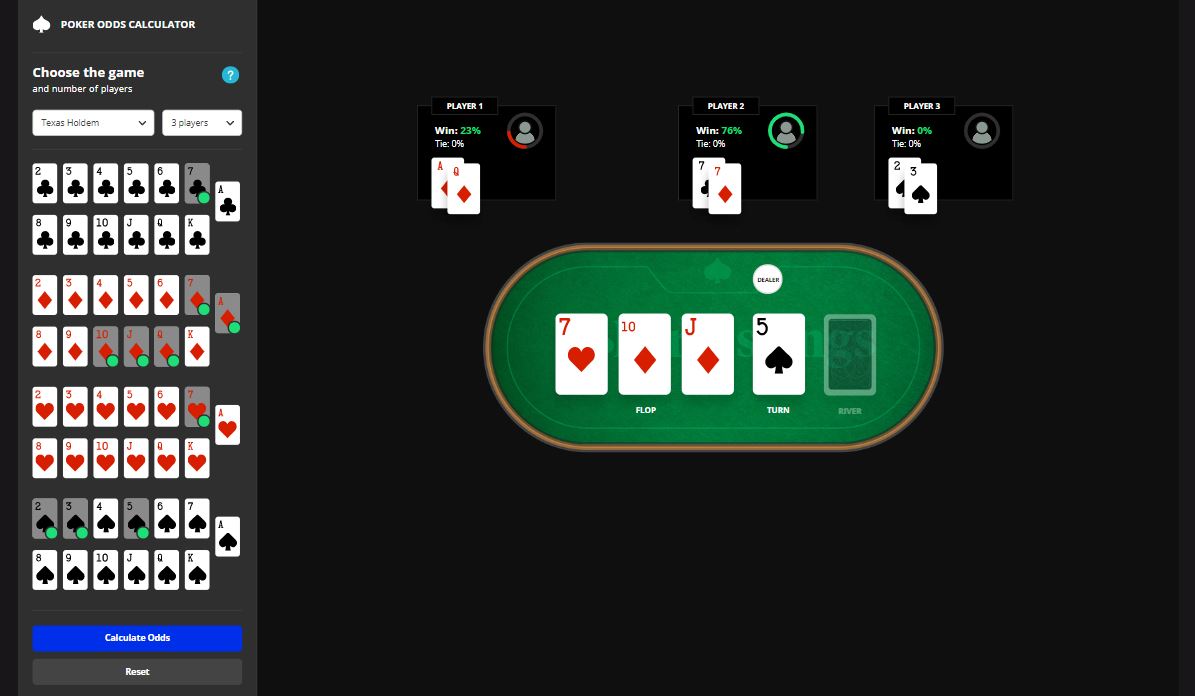
If you said 2:1 or 33% give yourself a big pat on the back. Here’s how it is calculated:
How To Calculate Poker Odds Quickly
Pot odds calculation
Pot odds = [pot size]:[amount to call]
Pot size = £50 pot + £50 bet = £100]
= £100:£50 = 2:1
2:1 pot odds ratio
Pot odds % calculation
Pot odds – call size/pot size
Pot size = £50 + £50 + £50 call = £150
= £50 / £150 = 1/3 = 33%
33% pot odds
How to calculate hand percentages
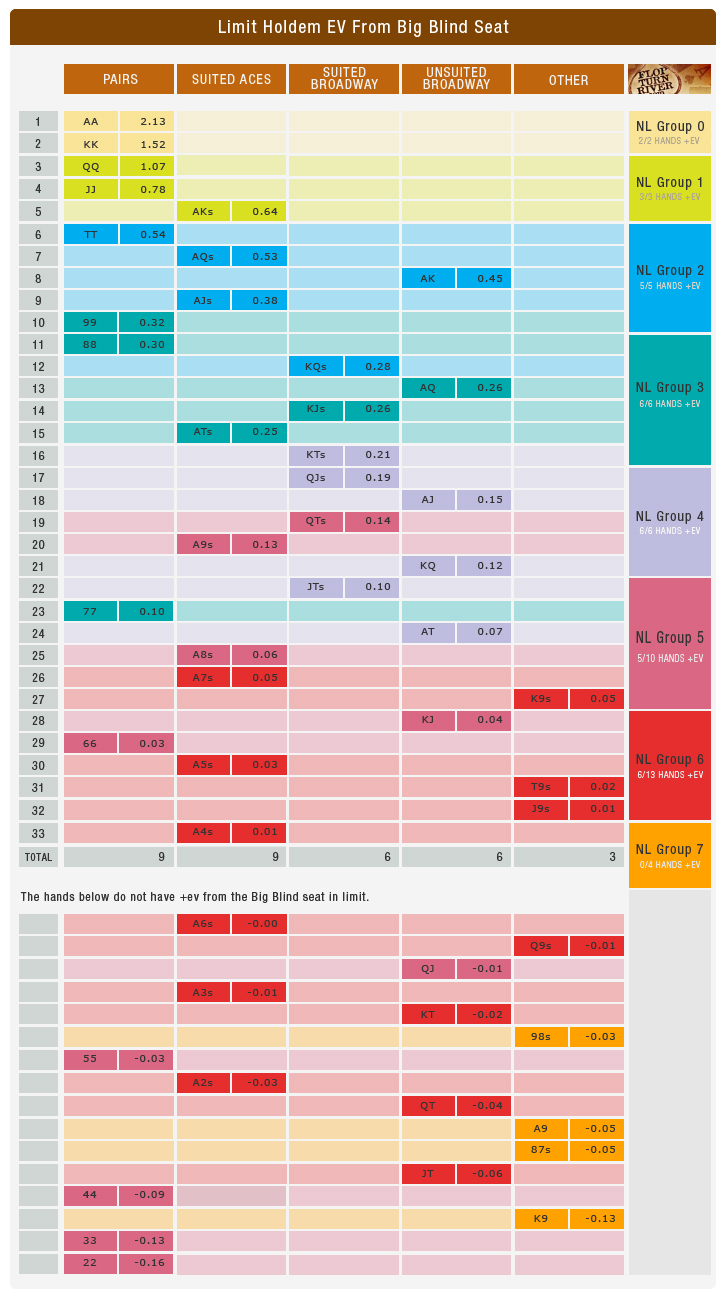
Unlike pot odds, it can be extremely difficult to calculate hand percentages during a fast-moving game. This is often frustrating for poker players when they’re trying to make a quick decision or wondering what went wrong.
Enter, the Grosvenor Casinos Poker Odds Calculator. Using the “Monte Carlo” algorithm, this awesome tool estimates the percentage of making a hand by simulating what could happen in any given scenario. The calculator then runs all the possible outcomes based on what each player has at the time. If you’ve not given it a go, try it out! It could give you just the edge you need, especially with out annual Goliath tournament never being far away.
With all that math and problem solving considered, whether you enjoy playing for fun or to improve your game, Poker is a proven positive exercise for the mind. You won’t believe some of the cognitive benefits of Poker.
And if you’re looking to up your game or are new to Poker, you should definitely check out these top Poker tips delivered by real pro players.
With all this new information, tactics and pro-player tips at your disposal, why not join us for the ultimate test of skill and a straight face at the prestigious GUKPT? Or, if you’re feeling brave, take on Goliath – the UK’s biggest ever live poker tournament.
In the meantime, we’ve got plenty of fantastic live poker games online for you to hit the felt and hone your card skills.
Keep it Fun
We’re here to help you keep it fun – remember to set your deposit limit. Click herefor more details on the safer gambling tools available including reality checks and the ability to take a break from your gaming.
We’ve also made it even easier to find our Safer Gambling tools from the home page of our website and there’s loads of information available at GamCare. You can also call the National Gambling Helpline, 24 hours a day, 7 days a week on Freephone 0808 8020 133.
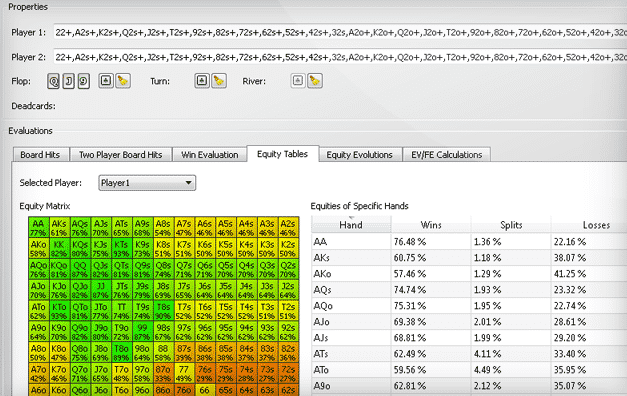
Comments
comments
In our poker math and probability lesson it was stated that when it comes to poker; “the math is essential“. Although you don’t need to be a math genius to play poker, a solid understanding of probability will serve you well and knowing the odds is what it’s all about in poker. It has also been said that in poker, there are good bets and bad bets. The game just determines who can tell the difference. That statement relates to the importance of knowing and understanding the math of the game.
In this lesson, we’re going to focus on drawing odds in poker and how to calculate your chances of hitting a winning hand. We’ll start with some basic math before showing you how to correctly calculate your odds. Don’t worry about any complex math – we will show you how to crunch the numbers, but we’ll also provide some simple and easy shortcuts that you can commit to memory.
Basic Math – Odds and Percentages
Odds can be expressed both “for” and “against”. Let’s use a poker example to illustrate. The odds against hitting a flush when you hold four suited cards with one card to come is expressed as approximately 4-to-1. This is a ratio, not a fraction. It doesn’t mean “a quarter”. To figure the odds for this event simply add 4 and 1 together, which makes 5. So in this example you would expect to hit your flush 1 out of every 5 times. In percentage terms this would be expressed as 20% (100 / 5).
Here are some examples:
- 2-to-1 against = 1 out of every 3 times = 33.3%
- 3-to-1 against = 1 out of every 4 times = 25%
- 4-to-1 against = 1 out of every 5 times= 20%
- 5-to-1 against = 1 out of every 6 times = 16.6%
Converting odds into a percentage:
- 3-to-1 odds: 3 + 1 = 4. Then 100 / 4 = 25%
- 4-to-1 odds: 4 + 1 = 5. Then 100 / 5 = 20%
Converting a percentage into odds:
- 25%: 100 / 25 = 4. Then 4 – 1 = 3, giving 3-to-1 odds.
- 20%: 100 / 20 = 5. Then 5 – 1 = 4, giving 4-to-1 odds.
Another method of converting percentage into odds is to divide the percentage chance when you don’t hit by the percentage when you do hit. For example, with a 20% chance of hitting (such as in a flush draw) we would do the following; 80% / 20% = 4, thus 4-to-1. Here are some other examples:
- 25% chance = 75 / 25 = 3 (thus, 3-to-1 odds).
- 30% chance = 70 / 30 = 2.33 (thus, 2.33-to-1 odds).
Some people are more comfortable working with percentages rather than odds, and vice versa. What’s most important is that you fully understand how odds work, because now we’re going to apply this knowledge of odds to the game of poker.
The right kind of practice between sessions can make a HUGE difference at the tables. That’s why this workbook has a 5-star rating on Amazon and keeps getting reviews like this one: “I don’t consider myself great at math in general, but this work is helping things sink in and I already see things more clearly while playing.”
Instant Download · Answer Key Included · Lifetime Updates
Counting Your Outs
Before you can begin to calculate your poker odds you need to know your “outs”. An out is a card which will make your hand. For example, if you are on a flush draw with four hearts in your hand, then there will be nine hearts (outs) remaining in the deck to give you a flush. Remember there are thirteen cards in a suit, so this is easily worked out; 13 – 4 = 9.
Another example would be if you hold a hand like and hit two pair on the flop of . You might already have the best hand, but there’s room for improvement and you have four ways of making a full house. Any of the following cards will help improve your hand to a full house; .
The following table provides a short list of some common outs for post-flop play. I recommend you commit these outs to memory:
Table #1 – Outs to Improve Your Hand
The next table provides a list of even more types of draws and give examples, including the specific outs needed to make your hand. Take a moment to study these examples:
Table #2 – Examples of Drawing Hands (click to enlarge)
Calculating Outs In Poker
Counting outs is a fairly straightforward process. You simply count the number of unknown cards that will improve your hand, right? Wait… there are one or two things you need to consider:
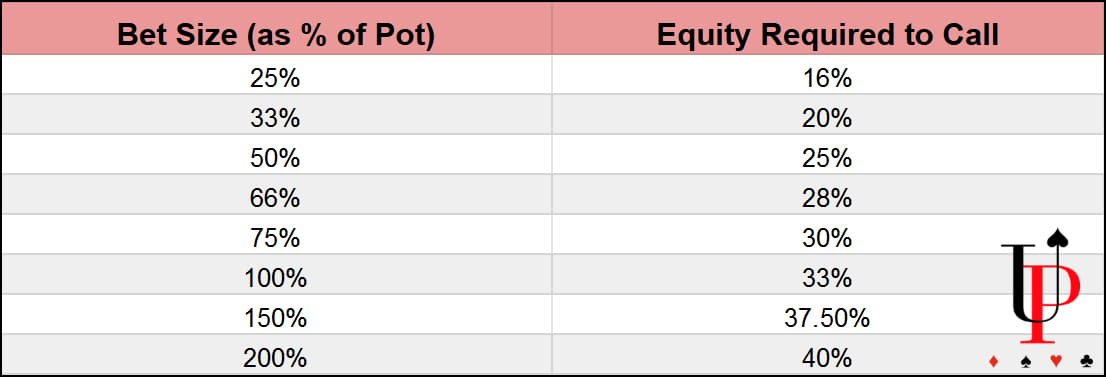
Don’t Count Outs Twice
There are 15 outs when you have both a straight and flush draw. You might be wondering why it’s 15 outs and not 17 outs, since there are 8 outs to make a straight and 9 outs for a flush (and 8 + 9 = 17). The reason is simple… in our example from table #2 the and the will make a flush and also complete a straight. These outs cannot be counted twice, so our total outs for this type of draw is 15 and not 17.
Anti-Outs and Blockers
There are outs that will improve your hand but won’t help you win. For example, suppose you hold on a flop of . You’re drawing to a straight and any two or any seven will help you make it. However, the flop also contains two hearts, so if you hit the or the you will have a straight, but could be losing to a flush. So from 8 possible outs you really only have 6 good outs.
It’s generally better to err on the side of caution when assessing your possible outs. Don’t fall into the trap of assuming that all your outs will help you. Some won’t, and they should be discounted from the equation. There are good outs, no-so good outs, and anti-outs. Keep this in mind.
Calculating Your Poker Odds
Once you know how many outs you’ve got (remember to only include “good outs”), it’s time to calculate your odds. There are many ways to figure the actual odds of hitting these outs, and we’ll explain three methods. This first one does not require math, just use the handy chart below:
Table #3 – Poker Odds Chart
As you can see in the above table, if you’re holding a flush draw after the flop (9 outs) you have a 19.1% chance of hitting it on the turn or expressed in odds, you’re 4.22-to-1 against. The odds are slightly better from the turn to the river, and much better when you have both cards still to come. Indeed, with both the turn and river you have a 35% chance of making your flush, or 1.86-to-1.
We have created a printable version of the poker drawing odds chart which will load as a PDF document (in a new window). You’ll need to have Adobe Acrobat on your computer to be able to view the PDF, but this is installed on most computers by default. We recommend you print the chart and use it as a source of reference. It should come in very handy.
Doing the Math – Crunching Numbers
There are a couple of ways to do the math. One is complete and totally accurate and the other, a short cut which is close enough.
Let’s again use a flush draw as an example. The odds against hitting your flush from the flop to the river is 1.86-to-1. How do we get to this number? Let’s take a look…
How To Work Out Poker Odds
With 9 hearts remaining there would be 36 combinations of getting 2 hearts and making your flush with 5 hearts. This is calculated as follows:
(9 x 8 / 2 x 1) = (72 / 2) ≈ 36.
This is the probability of 2 running hearts when you only need 1 but this has to be figured. Of the 47 unknown remaining cards, 38 of them can combine with any of the 9 remaining hearts:
9 x 38 ≈ 342.
Now we know there are 342 combinations of any non heart/heart combination. So we then add the two combinations that can make you your flush:
36 + 342 ≈ 380.
The total number of turn and river combos is 1081 which is calculated as follows:
(47 x 46 / 2 x 1) = (2162 / 2) ≈ 1081.
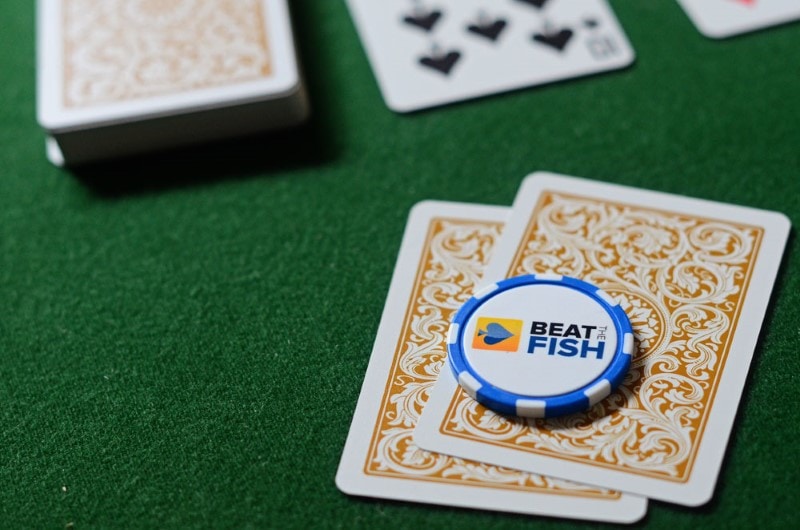
Now you take the 380 possible ways to make it and divide by the 1081 total possible outcomes:
380 / 1081 = 35.18518%
How To Calculate Poker Odds Quickly
This number can be rounded to .352 or just .35 in decimal terms. You divide .35 into its reciprocal of .65:
0.65 / 0.35 = 1.8571428
And voila, this is how we reach 1.86. If that made you dizzy, here is the short hand method because you do not need to know it to 7 decimal points.
The Rule of Four and Two
A much easier way of calculating poker odds is the 4 and 2 method, which states you multiply your outs by 4 when you have both the turn and river to come – and with one card to go (i.e. turn to river) you would multiply your outs by 2 instead of 4.
Imagine a player goes all-in and by calling you’re guaranteed to see both the turn and river cards. If you have nine outs then it’s just a case of 9 x 4 = 36. It doesn’t match the exact odds given in the chart, but it’s accurate enough.
What about with just one card to come? Well, it’s even easier. Using our flush example, nine outs would equal 18% (9 x 2). For a straight draw, simply count the outs and multiply by two, so that’s 16% (8 x 2) – which is almost 17%. Again, it’s close enough and easy to do – you really don’t have to be a math genius.
Do you know how to maximize value when your draw DOES hit? Like…when to slowplay, when to continue betting, and if you do bet or raise – what the perfect size is? These are all things you’ll learn in CORE, and you can dive into this monster course today for just $5 down…
Conclusion
In this lesson we’ve covered a lot of ground. We haven’t mentioned the topic of pot odds yet – which is when we calculate whether or not it’s correct to call a bet based on the odds. This lesson was step one of the process, and in our pot odds lesson we’ll give some examples of how the knowledge of poker odds is applied to making crucial decisions at the poker table.
As for calculating your odds…. have faith in the tables, they are accurate and the math is correct. Memorize some of the common draws, such as knowing that a flush draw is 4-to-1 against or 20%. The reason this is easier is that it requires less work when calculating the pot odds, which we’ll get to in the next lesson.
Related Lessons
By Tom 'TIME' Leonard
Tom has been writing about poker since 1994 and has played across the USA for over 40 years, playing every game in almost every card room in Atlantic City, California and Las Vegas.